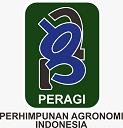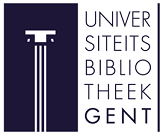Analysis of Agricultural Land Area Decrease on Income Inequality in East Java, Indonesia
Abstract
Income inequality remains a significant issue in developing nations, including East Java, which was ranked fifth among regions in Indonesia for having the highest level of inequality in 2023. This inequality is often associated with structural changes, especially the decrease of agricultural land to accommodate industrial development. This study aims to determine the most suitable spatial model, analyze the relationship between agricultural land reduction and income inequality in East Java, and explore the effects of other factors such as Agricultural Sector GDP, HDI, labor force, and real per capita expenditure on income inequality. The research uses secondary data, including panel data from 38 regencies/cities in East Java from 2009 to 2018. The results indicate spatial dependency among the independent variables, making the Spatial Autoregressive Model (SAR) the most appropriate method for analysis. These findings suggest that a significant decrease in agricultural land area tends to exacerbate income inequality even further. Therefore, this study has important policy implications, including the need for the government to uphold laws related to the protection of sustainable agricultural land and to provide skills training that is relevant to the needs of modern sectors. The results also show that an increase in the agricultural sector's GDP and labor force can boost productivity, output, and income, thereby potentially reducing income inequality. Whereas a rise in HDI and per capita expenditure tends to increase income inequality due to unequal access to development benefits and the consumption patterns of high-income groups, which further widen the gap.
Keywords
Full Text:
PDFReferences
Amaliyah, S., & Arif, M. (2023). Analisis Determinan Disparitas Distribusi Pendapatan di Kabupaten/Kota Provinsi Sulawesi Selatan Tahun 2017-2021. Primanomics : Jurnal Ekonomi & Bisnis, 21(2), 1–10. https://doi.org/10.31253/pe.v21i2.1811
Anandari, A. A. (2022). Correlation Analysis of Agricultural Sector to The Percentage of Poverty and Inequality in Jepara Regency. Jurnal Litbang Provinsi Jawa Tengah, 20(1), 53–64. https://doi.org/10.36762/jurnaljateng.v20i1.937
Andina, R. D., Jajang, & Supriyanto. (2021). Analisis Faktor-Faktor yang Mempengaruhi Ketimpangan Distribusi Pendapatan di Pulau Jawa Tahun 2014-2020. Jurnal Ilmiah Matematika Dan Pendidikan Matematika (JMP), 13(1), 1–14. https://doi.org/10.20884/1.jmp.2021.13.1.4353
Aprilianti, V. A., & Harkeni, A. (2021). The Effect of Human Development Index on Regional Inequality in Jambi Province. Jurnal Khazanah Intelektual, 5(2), 1142–1160. https://doi.org/10.37250/newkiki.v5i2.111
Ariasta, M. A. A., & Setiawati, R. I. S. (2024). The Impact of TPT , HDI and Population on the Widening Income Inequality between Regions in East Java. Samudra Ekonomi & Bisnis, 15(3), 697–713. https://doi.org/10.33059/jseb.v15i3.10361
Arif, M., & Wicaksani, R. A. (2017). Ketimpangan Pendapatan Propinsi Jawa Timur dan Faktor- Faktor yang Mempengaruhinya. University Research Colloquium, 6, 323–328. https://journal.unimma.ac.id/index.php/urecol/article/view/1342
Astuti, D & Hukom, A. (2023). Analisis Pengaruh PDRB, IPM Dan Tenaga Kerja Terhadap Ketimpangan Distribusi Pendapatan Di Kalimantan Tengah. OPTIMAL Jurnal Ekonomi Dan Manajemen, 3(2), 73–84. https://doi.org/10.55606/optimal.v3i2.1395
Bantika, V., Suzana, B. olfie L., & Kapantow, G. H. M. (2015). Faktor-Faktor yang Mempengaruhi Ketimpangan Distribusi Pendapatan di Sulawesi Utara. Cocos, 6(17), 1–33. https://ejournal.unsrat.ac.id/v3/index.php/cocos/article/view/10460/10046
Badan Pusat Statistik. (2024). Gini Rasio Menurut Kabupaten/Kota di Jawa Timur 2021-2023. Retrieved from https://jatim.bps.go.id/id/statistics-table/2/NDg4IzI=/gini-rasio-menurut-kabupaten-kota-di-jawa-timur.html
Badan Pusat Statistik. (2024). Produk Domestik Regional Bruto Provinsi Jawa Timur Menurut Lapangan Usaha, Vol. 16. Retrieved from https://jatim.bps.go.id/id/publication/2024/04/04/7e487b04ddf87919167c80dc/produk-domestik-regional-bruto-provinsi-jawa-timur-menurut-lapangan-usaha-2019-2023.html
Badan Pusat Statistik. (2024). [Seri 2010] Laju Pertumbuhan PDB Seri 2010 (Persen), 2024. Retrieved from https://www.bps.go.id/id/statistics-table/2/MTA0IzI=/-seri-2010--laju-pertumbuhan-pdb-seri-2010--persen-.html
Bappeda Jatim. (2022). Tingkat Pengangguran Terbuka (TPT) Jawa Timur Semester II 2022 sebesar 5,49 persen. Retrieved from https://bappeda.jatimprov.go.id/2022/11/11/tingkat-pengangguran-terbuka-tpt-jawa-timur-semester-ii-2022-sebesar-549-persen/
Credit Suisse Research Institute. (2022). Global Wealth Databook 2022. Retrieved from https://www.credit-suisse.com/media/assets/corporate/docs/about-us/research/publications/global-wealth-databook-2022.pdf
Dartanto, T., Yuan, E. Z. W., & Sofiyandi, Y. (2017). Two Decades of Structural Transformation And Dynamics of Income Equality in Indonesia. Asian Development Bank Institute, 783, 1–23. https://www.adb.org/sites/default/files/publication/371316/adbi-wp783.pdf
Desrindra, I., Murialti, N., & Anriva, D. H. (2016). Analysis of Factors Affecting Human Development Index in Riau. Jurnal Akuntansi & Ekonomika, 6(2), 98–107. https://ejurnal.umri.ac.id/index.php/jae/article/view/750
Divanbeigi, R., Paustian, N., & Loayza, N. (2016). Structural Transformation of the Agricultural Sector : A Primer. Research & Policy Briefs From the World Bank Malaysia Hub. http://documents1.worldbank.org/curated/en/561951467993197265/pdf/Structural-transformation-of-the-agricultural-sector-a-primer.pdf
Dubin, R. (2012) Spatial Weights. In: Fotheringham, A.S. and Rogerson, P.A., Eds., Handbook of Spatial Analysis. London: Sage Publications.
Elhorst, J.P. (2010). Spatial panel data models. In Handbook of Applied Spatial Analysis: Software Tools, Methods and Applications, ed. M. M. Fischer and A. Getis, 377–408. Berlin: Springer.
Harahap, A. H., Rahmanta, R., & Lindawati, L. (2022). Poverty Analysis and Agricultural Sector Growth in North Sumatra Province, Indonesia. Agro Bali : Agricultural Journal, 5(1), 76–83. https://doi.org/10.37637/ab.v5i1.870
Ikhsan, A., Ariusni, A., dan Putri, D.Z. (2019). Analisis Pengaruh Sektor Pertanian, Sektor Pertambangan, dan Sektor Industri terhadap Ketimpangan Distribusi Pendapatan di Indonesia. Jurnal Kajian Ekonomi dan Pembangunan, 1(3), 731–738. https://doi.org/10.24036/jkep.v1i3.7700
Lenggogeni, S. (2012). Indeks Harga Pertanian, Nilai Tukar Rupiah dan Relevansinya dengan Investasi Sektor Pertanian. Jurnal Ekonomi, 20(4), 1–9. https://festiva.ejournal.unri.ac.id/index.php/JE/article/view/1186
Liu, S., Wang, Y., Zhang, G.J., Wei, L., Wang, B., dan Ye, L. (2023). Contrasting Influences of Biogeophysical and Biogeochemical Impacts of Historical Land Use on Global Economic Inequality. Nat Cammun 13, 2497. https://doi.org/10.1038/s41467-022-30145-6
Manning, C. (1995). Approaching the Turning Point?: Labor Market Change Under Indonesia’s New Order. The Developing Economies, 33(1), 52-81. https://doi.org/10.1111/j.1746-1049.1995.tb01056.x
Majid, R. (2021). Dasar Kependudukan. Pekalongan: Nasya Expanding Management.
Marsono, M. (2022). Pemodelan Spasial Pada Pertumbuhan Ekonomi Indonesia Dengan Pendekatan Ekonometrika Spasial Data Panel. Saintifik, 8(2), 176–187. https://doi.org/10.31605/saintifik.v8i2.354
Matondang, Z. (2018). Pengaruh Jumlah Penduduk, Jumlah pengangguran dan Tingkat Pendidikan terhadap Ketimpangan Pendapatan di Desa Palopat Maria Kecamatan Padangsidimpuan Hutaimbaru. Ihtiyath, 2(2), 255–270. https://journal.iainlangsa.ac.id/index.php/ihtiyath/article/download/715/452/
Ministry of Agriculture. (2020). Statistik Lahan Pertanian Tahun 2015-2019. Statistik Lahan Pertanian Tahun 2015-2019, 201. https://satudata-pertanian-go-id.webpkgcache.com/doc/-/s/satudata.pertanian.go.id/assets/docs/publikasi/Statistik_Lahan_Pertanian_Tahun_2015-2019.pdf
Mulyani, A., Kuncoro, D., Nursyamsi, D., & Agus, F. (2016). Analysis of Paddy Field Conversion: The Utilization of High Resolution Spatial Data Shows an Alarming Conversion Rate. Jurnal Tanah Dan Iklim, 40(2), 121–133. https://doi.org/10.2017/jti.v40i2.5708
Nadhifah, T. ’, & Wibowo, M. G. (2021). Determinan Ketimpangan Pendapatan Masyarakat di Daerah Istimewa Yogyakarta. Jurnal Ekonomi Dan Bisnis, 24, 39–52. https://jurnal.unikal.ac.id/index.php/jebi/article/view/1372
Ningrum, J. W., Khairunnisa, A. H., & Huda, N. (2020). Pengaruh Kemiskinan, Tingkat Pengangguran, Pertumbuhan Ekonomi dan Pengeluaran Pemerintah Terhadap Indeks Pembangunan Manusia (IPM) di Indonesia Tahun 2014-2018 dalam Perspektif Islam. Jurnal Ilmiah Ekonomi Islam, 6(2), 212. https://doi.org/10.29040/jiei.v6i2.1034
Oktarina, N., & Yuliana, Y. (2023). Hubungan Ketimpangan Pendapatan dan Pertumbuhan Ekonomi di Sumatera Barat : Pembuktian Hipotesis Kuznet. Jurnal Greenation Ilmu Akuntansi, 1(1), 25–31. http://dx.doi.org/10.38035/jgia.v1i1.8
Oxfam. (2023). Survival of The Richest: How we must tax the super-rich now to fight inequality. Retrieved from https://oxfamilibrary.openrepository.com/bitstream/handle/10546/621477/bp-survival-of-the-richest-160123-en.pdf
Rahmawati, D., & Bimanto, H. (2021). Perbandingan Spatial Autoregressive Model dan Spatial Error Model dalam Pemodelan Indeks Pembangunan Manusia di Provinsi Jawa Timur. Jurnal Statistika Dan Aplikasinya, 5(1), 41–50. https://doi.org/10.21009/jsa.05104
Romli, M. S., Hutagaol, M. P., & Priyarsono, D. S. (2016). Structural transformation: Factors and Its Impact on Income Disparity in Madura. Jurnal Ekonomi Dan Kebijakan Pembangunan, 5(1), 25–44. https://doi.org/10.29244/jekp.5.1.2016.25-44
Rulita, I., & Sakti, R. K. (2023). Perbankan Dan Indikator Ekonomi : Sebuah Analisa Ketimpangan Distribusi Pendapatan Di Asean-3. Journal of Development Economic and Social Studies, 2(3), 701–715. https://doi.org/10.21776/jdess.2023.02.3.20
Setyanti, A. M. (2021). Sektor Pertanian Dalam Dinamika Transformasi Struktural Di Indonesia. SEPA: Jurnal Sosial Ekonomi Pertanian Dan Agribisnis, 18(1), 48. https://doi.org/10.20961/sepa.v18i1.45605
Sulistiawati, R. (2013). Pengaruh Upah Minimum Terhadap Penyerapan Tenaga Kerja dan Kesejahteraan Masyarakat di Provinsi di Indonesia. Jurnal Eksos, 8(3), 195–211. http://repository.polnep.ac.id/xmlui/handle/123456789/65
Tarp F, Channing A, Henning T, Sherman R, Rasmus H. (2002). Facing the Development Challenge in Mozambique: An Economywide Perspective. Washington: International Food Policy Research Institute. Retrieved from https://cgspace.cgiar.org/bitstreams/42fe881c-7e1b-4eae-9fbb-9961fab90074/download
Todaro, M.P., dan Smith, S.C. (2020). Economic Development: Thirteenth Edition. Hoboken: Pearson.
United Nations. (2023). Goal 10: Reduce Inequality within and among Countries. Retrieved from https://www.un.org/sustainabledevelopment/inequality/
Winarni, D. T., & Hartono, D. (2023). Dampak Pertumbuhan Sektoral terhadap Ketimpangan Pendapatan dan Kemiskinan di Indonesia:Analisis menggunakan Social Accounting Matrix dan Micro-Simulation. Jurnal Kebijakan Ekonomi, 18(1), 1–20. https://doi.org/10.21002/jke.2023.01
Winarno, W.W. (2017). Analisis Ekonometrika dan Statistika dengan EViews. Yogyakarta: UPP STIM YKPN. Retrieved from http://repositorybaru.stieykpn.ac.id/858/1/Analisis%20Ekonometrika%20dan%20Statistika%20dengan%20EViews.pdf
Yuniati, M., Amini, R., & Ihsan. (2022). Analisis Dampak Transformasi Struktural terhadap Kesejahteraan Masyarakat di Kabupaten Lombok Tengah, Nusa Tenggara Barat. Jurnal Multidisiplin Ilmu, 1(4), 2828–6863. https://doi.org/https://doi.org/10.31004/koloni.v1i4.287
Refbacks
- There are currently no refbacks.


























